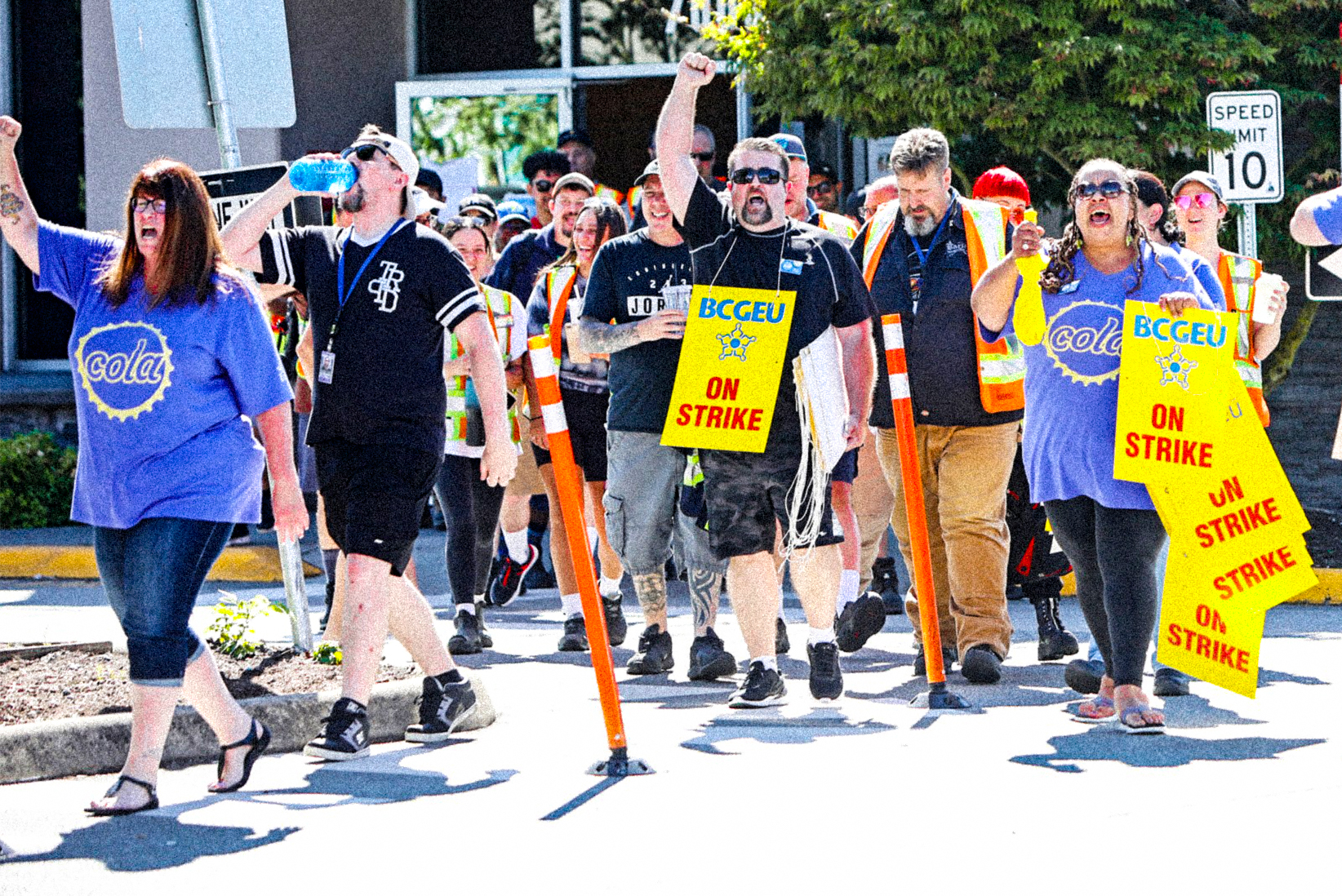
On Aug. 15, 1,000 government employees involved in liquor and cannabis distribution went on strike against inflation. This comes months after contract bargaining between the British Columbia General Employees Union (BCGEU) and the Public Service Agency (PSA) broke down over a series of insulting wage offers. After years of below-inflation wage increases and with inflation now spiking above eight per cent, “cost of living adjustment” or COLA has become the watchword of the BCGEU. The B.C. NDP government is firmly opposed to this, likely in fear it would set a precedent for the nearly 400,000 workers set to have their contracts re-negotiated over the next year.
These workers represent the tip of the spear, as these contract negotiations cover 33,000 workers across many sectors, including emergency response, community health, social services, education, and administration staff. Nearly every government service could be affected if the strike expands, which seems likely given the intransigence of the PSA.
The simple truth is that the government is only willing to offer wage increases that are significantly below the skyrocketing rate of inflation, which is another way of cutting worker’s wages.
B.C. NDP committed to a wage cut
This strike has been in the works for months, since the government offered a measly 5.5 per cent over three years, a wage increase that would have already been wiped out by inflation before the deal was signed. It’s as though the people in charge aren’t aware of massive price increases in food, fuel, and rent. Given that MLAs have enjoyed automatic wage increases in line with inflation since 2007, it’s entirely possible they’re not!
In the wake of this insulting offer, the BCGEU conducted strike balloting for five weeks and with 80 per cent of the membership having voted, achieved a 94.6 per cent vote in favour of strike action. In response, the government bypassed the union and sent an offer of 10.99 per cent over three years directly to the workers. This offer still means these workers would likely be seeing a decrease in their purchasing power for the remainder of the contract.
Regardless of how the camouflage is arranged, these offers all result in the workers being asked to accept wage cuts while prices rise higher and higher. Why is there such an ardent commitment to reducing wages? Because capitalism is in crisis and has been for several years now. Two major economic crashes, “once in a lifetime” crashes, have occurred in the last 14 years, with the weakest recovery in history between them. Economists are predicting stagnant growth coupled with inflation, a phenomena that was supposed to be impossible, right up until it dramatically occurred in the 1970s. In this environment, either the capitalist class must pay for the crisis or the working class must; and given that the capitalist class is in charge, we can assume it won’t be them footing the bill. This is why they attempt to cut wages indirectly, to make the workers pay without causing too much fuss.
Workers are ready to fight
However, many workers are not willing to simply let their standard of living erode without putting up a fight. Last fall, the news buzzed about “Striketober”, when over 100,000 workers in America participated in strike action. Since then, major struggles have been taking place at Amazon and Starbucks, with workers all over the world watching closely and considering the possibilities. A Gallup poll from 2021 shows that the approval rating of unionization is the highest it has been since 1965 (at a 68 per cent approval rating) and has been steadily trending upwards since 2016.
The working class is primed to support a struggle for higher wages. In the past, union leaders, particularly those representing public sector workers, were shy to present demands for higher wages, frightened they might be accused of being greedy. This was a mistake at the time and it would be a bigger mistake today. Having watched Justin Trudeau provide hundreds of billions to the bosses during the COVID-19 pandemic, while clawing back workers’ support payments, the working class knows they’re being screwed over. People are prepared to fight!
With 400,000 workers negotiating their contracts this year, there is the potential for a major fight over wages and the cost of living. On the picket lines in Victoria on August 15th, there were many representatives of other unions. They were walking the line in solidarity, but they were also making connections, asking questions, and learning from the tactics of the BCGEU.
Earlier in the year, the BCGEU proposed a two-year contract, with each year seeing either a 5 per cent wage increase or an increase in line with inflation, whichever was higher. Simply put, the union believes workers shouldn’t have their wages cut. Certainly anyone working for a wage can understand that.
Furthermore, for the BCGEU, there is a major concern that the highly-skilled workforce that government services rely on could quickly erode, as people leave for higher-paying jobs elsewhere. In high-pressure workplaces like wildfire management, disaster response, and addictions support, rapid turnover can destroy a functional team. This concern was expressed by several workers on the picket line in Victoria.
If the BCGEU mobilizes all 33,000 workers covered by the existing strike mandate, the government will come under heavy pressure to end the strike quickly. With a nearly 95 per cent strike vote, it’s clear the workers want to fight and win. Workers from every sector are ready to support their class.
Say no to a wage cut!
Victory to the BCGEU!

